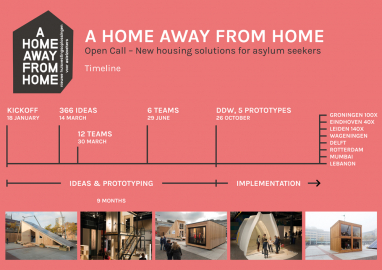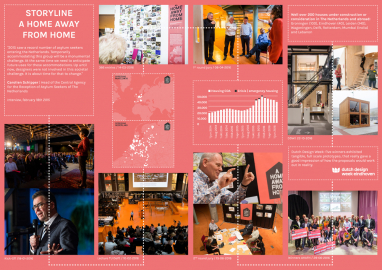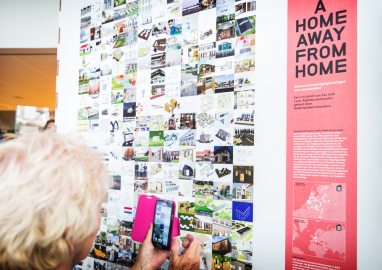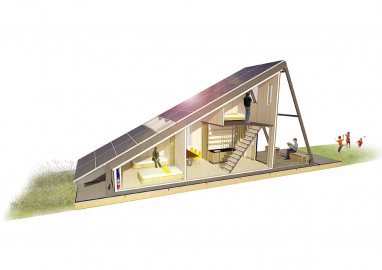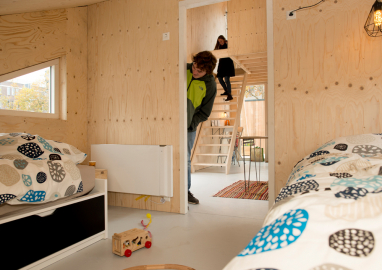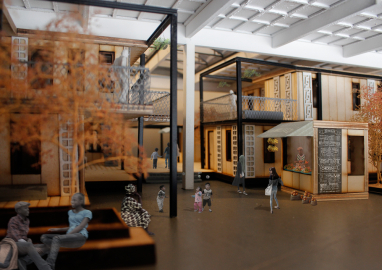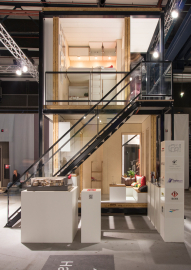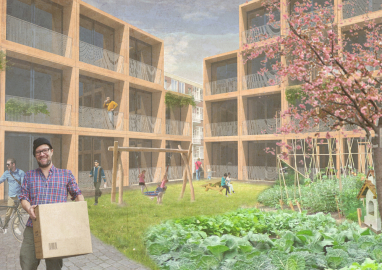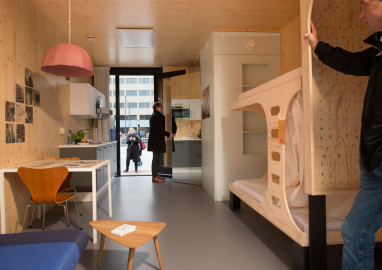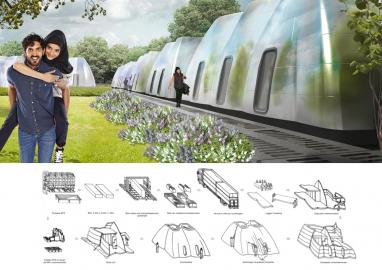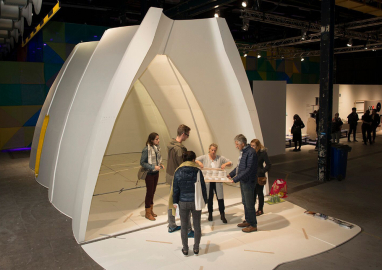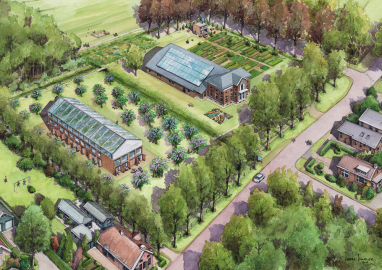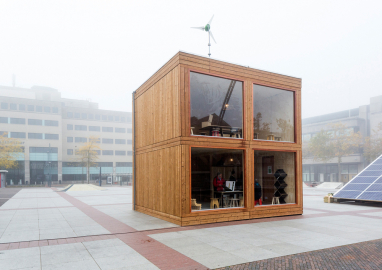A Home away from Home (dismantled)
An impressive number of 366 proposals for new housing solutions for asylum seekers was entered into the competition A Home away from Home. The competition proved to be a catalyst for innovation on the housing market. It contributed to a more inclusive society by mobilizing the available design power to address urgent and multi facetted housing issues.
The emerging refugee crisis of 2015 caused tension and disquiet in society and the housing market in particular. The question of how to promote integration became increasingly urgent.
Addressing this question takes a multi-disciplinary approach with an important role for architecture and design. The fences that close borders constitute architecture of a powerful and intimidating kind. Now, more than ever, architects must use their powers of imagination to also create new inclusive possibilities and add social value.
Within 9 months, A home away from home generated an impressive 366 proposals for innovative housing solutions. Its results effectively address the refugee crisis, both in the national and international context. In addition it also addresses the needs of the Dutch housing market. Design power proved vital to achieving this.
In 2015 the influx was huge, but recent months have shown a decline in numbers of refugees coming to the Netherlands. Due to this unpredictability, it seemed logical to treat the issue of housing refugees as a housing issue in general. The market for affordable homes is tight and it’s no exception for people to remain on waiting lists for years. A Home away from Home presented a great opportunity to address the general need for affordable, flexible housing. For the benefit of refugees who have been granted temporary or permanent resident status in the Netherlands as well as other groups requiring appropriate housing.
So, how do we add a large number of affordable and flexible homes to the regular housing stock? The answer lies in creativity and innovative design thinking. A Home away from Home challenges those working in design and construction to embrace the refugee crisis and its inherent unpredictability as a driver for innovation in the affordable housing segment.
The competition knew two categories, outdoor and indoor. Outdoor solutions could either be of a more temporary nature –easy to ship, construct, deconstruct and store- or more permanent, in which case the construction would have to be suitable for alternative use. The aim for the indoor category was also to find new destinations for the approximately fifty million square meters of vacant Dutch real estate. Converting even part of this vacant space into affordable, flexible homes would meet much of the need for additional housing. The Netherlands isn’t full, it’s full of empty space!
366 plans were submitted across both categories. Proposals came in from professionals as well as students. Six winners were selected, five of which developed a full scale prototype. These prototypes were presented at the Dutch Design Week (22 – 30 October 2016). Tangible prototypes, that really gave a good impression of how the proposals would work out in reality, proved to be quite convincing. Well over 200 houses are either already completed or under construction and more are being considered for other locations in Holland and abroad, such as in Mumbai (India) and Lebanon.

